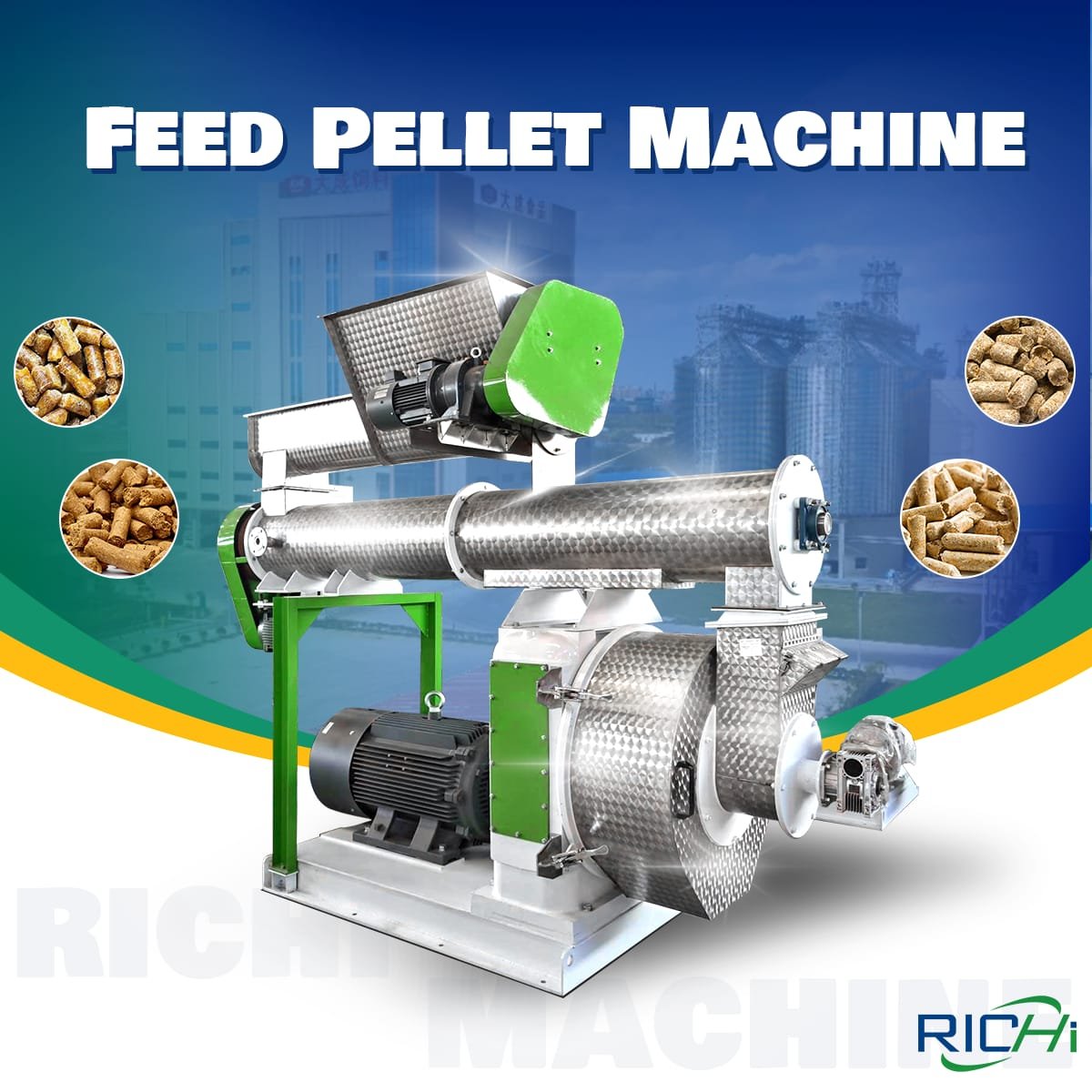Livestock feed pellet machines are versatile pieces of equipment designed to process a wide variety of raw materials into compact, easily digestible pellets for various types of livestock. These machines play a crucial role in modern animal husbandry by improving feed efficiency, reducing waste, and enhancing the overall nutritional value of animal diets. This article explores the diverse range of feed types that can be processed using livestock feed pellet machines, highlighting their capabilities and advantages in animal nutrition.
- Grain-Based Feeds
Livestock feed pellet machines excel at processing various grains and their byproducts:
- Corn
- Wheat
- Barley
- Oats
- Sorghum
- Rice bran
- Wheat bran
These grains form the base of many livestock diets, providing essential carbohydrates and energy.
- Protein Sources
High-protein ingredients can be effectively incorporated into pellets:
- Soybean meal
- Cottonseed meal
- Sunflower meal
- Peanut meal
- Fish meal
- Blood meal
- Feather meal
Protein sources are crucial for muscle development and overall growth in livestock.
- Forage and Fibrous Materials
Pellet machines can process various fibrous materials:
- Alfalfa
- Timothy hay
- Grass hay
- Straw
- Corn stalks
- Sugar beet pulp
These materials provide essential fiber for ruminant digestion and can be pelletized to reduce storage space and improve handling.
- Mineral and Vitamin Premixes
Essential nutrients can be incorporated into pellets:
- Calcium supplements
- Phosphorus sources
- Trace mineral mixes
- Vitamin premixes
Pelletizing ensures even distribution of these crucial nutrients throughout the feed.
- Byproduct Feeds
Many agricultural and industrial byproducts can be pelletized:
- Distillers grains
- Brewers grains
- Citrus pulp
- Apple pomace
- Vegetable processing waste
Pelletizing these byproducts adds value to what might otherwise be waste materials.
- Specialty Feeds
Livestock feed pellet machines can produce specialized feeds for different purposes:
- Creep feed for young animals
- Lactation diets for dairy animals
- Finishing feeds for meat production
- Horse feed blends
- Rabbit pellets
- Goat and sheep feed formulations
These specialized feeds cater to the specific nutritional needs of different animals and production stages.
- Organic and Non-GMO Feeds
With growing demand for organic livestock products, pellet machines can process:
- Certified organic ingredients
- Non-GMO feed components
- Natural and additive-free formulations
These feeds cater to niche markets and consumer preferences for organic animal products.
- Medicated Feeds
Under proper regulation and control, pellet machines can incorporate:
- Antibiotics (where permitted)
- Growth promoters
- Coccidiostats
- Other approved medications
Pelletizing ensures even distribution of medications throughout the feed.
- Aquaculture Feeds
Many livestock feed pellet machines are adaptable for aquaculture feed production:
- Fish feed pellets
- Shrimp feed
- Floating and sinking aqua feeds
These feeds require specific formulations and often different pellet characteristics compared to terrestrial livestock feeds.
- Silage Additives
Some pellet machines can process additives used in silage production:
- Bacterial inoculants
- Enzymes
- Preservatives
These additives, when pelletized, can be easily mixed with silage to improve fermentation and preservation.Advantages of Using Livestock Feed Pellet MachinesSeveral features of livestock feed pellet machines make them particularly advantageous for feed production:
- Improved Feed Efficiency: Pelletizing can increase feed digestibility and reduce waste.
- Better Handling and Storage: Pellets are easier to transport, store, and dispense than loose feed.
- Reduced Feed Segregation: Pelletizing ensures that animals receive a balanced diet with each mouthful.
- Customization: Machines can be adjusted to produce pellets of various sizes and densities for different animals.
- Increased Palatability: Many animals prefer pellets over mash feeds, leading to increased feed intake.
- Cost-Effective: Pelletizing can incorporate lower-cost ingredients while maintaining nutritional value.
- Reduced Dust: Pellets produce less dust than mash feeds, improving air quality in barns.
Considerations for Processing Different FeedsWhile livestock feed pellet machines are versatile, some considerations are necessary when processing different types of feed:
- Moisture Content: Different ingredients require specific moisture levels for optimal pelletizing.
- Particle Size: Proper grinding of ingredients is crucial for pellet quality and animal digestibility.
- Fat Content: High-fat ingredients may require special handling or additives to achieve good pellet quality.
- Fiber Level: High-fiber materials may need pre-processing or binders to form stable pellets.
- Heat Sensitivity: Some nutrients or additives may be heat-sensitive and require careful temperature control during pelletizing.
- Pellet Durability: Different livestock species may require pellets of varying hardness and durability.
Technological AdvancementsRecent advancements in livestock feed pellet machine technology have further enhanced their capabilities:
- Improved Die and Roller Designs: For better pellet quality and energy efficiency.
- Advanced Control Systems: Allowing for precise adjustment of processing parameters.
- Integrated Mixing and Conditioning: Ensuring better ingredient incorporation and steam conditioning.
- Energy Recovery Systems: Reducing overall energy consumption in the pelletizing process.
Conclusion
Livestock feed pellet machines demonstrate remarkable versatility in their ability to process a wide range of feed ingredients and formulations. From basic grain-based feeds to specialized organic formulations and aquaculture feeds, these machines offer livestock producers the flexibility to meet diverse nutritional requirements and market demands.
The ability of feed pellet machines to handle various ingredients, improve feed efficiency, and produce consistent quality pellets makes them invaluable tools in modern livestock nutrition. As the animal husbandry industry continues to evolve, with increasing emphasis on efficiency, sustainability, and animal welfare, livestock feed pellet machines are well-positioned to meet these challenges.
For livestock producers and feed manufacturers, investing in a versatile feed pellet machine opens up possibilities for product innovation, quality improvement, and operational efficiency. By understanding the full range of feed types that can be processed with these machines, producers can maximize their equipment’s potential and respond effectively to changing market demands and nutritional insights in the dynamic field of animal nutrition.
Related post: animal feed pellet making machine

